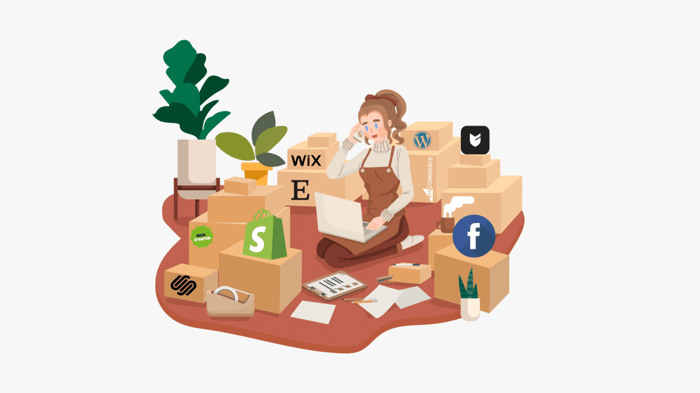Crowdfunding has increased in popularity as creators and entrepreneurs look for greater accessibility to funding. Crowdfunding platforms like Indiegogo have responded to the demand by making it easy for anyone to set up a campaign and receive support from those who want to see the projects become a reality.
However, an increase in campaigning means an increased need to stand out. Indiegogo’s Campaign Strategy team has shared their best crowdfunding tips and tricks to help you bring your creative product ideas to life.
What Is Crowdfunding?
Traditional funding seeks large amounts of money from a small group of people. Crowdfunding, on the other hand, raises money for a project, business venture, or another idea by asking a large number of individuals to donate small amounts of money.
Crowdfunding is typically done online using platforms like Indiegogo to connect creators and supporters. Creators, entrepreneurs, nonprofits, and other individuals can pitch their ideas, tell their stories, and raise money while supporters can browse campaigns to find ones they want to financially back.
Rewards-based crowdfunding provides an incentive for backing a project. Backers may receive products, services, discounts, or exclusive content. This method is typically used to start businesses or complete projects, and rewards are generally related to the general theme of the campaign.
How Crowdfunding Works
Most campaigns run for between 30 and 90 days. Many crowdfunding platforms take a percentage of the money you raise, while some will only give you the money if you meet your goal (and return the money to your backers if you don’t).
After your campaign ends, you will use the funds to bring your project to life and send out your rewards according to the timeline that you communicate to your supporters.
Is Crowdfunding Right for Your Product?
Just about anyone can set up a crowdfunding campaign for their ideas. However, not all projects will be successful. If you’re thinking about crowdfunding your project, consider the following:
- Can you communicate all of the details of your project and how you plan to make it successful?
- Do you have a value proposition that helps your product or service stand out?
- Is there enough demand for your product to drive people to back your campaign?
- Is your campaign goal reasonable?
- What types of rewards can you offer contributors?
If you don’t have all of these questions answered thoroughly, you might need to do some more planning before launching a campaign. But if you feel ready to move forward, read the following tips for successful fundraising.
5 Tips to Get Your Creative Product Ideas Launched and Funded
Planning out your creative project is just the beginning of the crowdfunding process. To increase your chances of having a successful crowdfunding campaign, you’ll also need to explore marketing and strategizing. Take a look at the crowdfunding advice from Indiegogo campaign strategists below.
1. Build an email list to raise awareness and get your audience excited before you launch your campaign.
Nalin Chuapetcharasopon, Director of Client Success and Services at Indiegogo, says, “One of the most important things you can do before you launch your campaign is to build your email list. The more people you’re able to reach, the better your chances for success.”
Chuapetcharasopon advises campaigners to “build buzz and excitement for your crowdfunding campaign with a pre-launch page.” A pre-launch page will give your audience an idea of what’s to come, and you can use it to collect email addresses.
Some other ways to raise awareness and gather email addresses include social media posts and ads, partnering with other campaigners or social media influencers, hosting events or giveaways, and blogging.
Email marketing can have huge benefits for your crowdfunding campaign. According to Chuapetcharasopon, “On average, we’ve found that emails convert 34% more than other forms of outreach… More email addresses means more contributions, more sharing, and more general awareness of your campaign.”
Sending out regular emails is a great way to create personalized content that helps you connect with your audience. Leading up to your campaign, emails can get your audience excited and show that you are committed to your project. You will be more likely to establish authority and credibility by being transparent about your work, which also improves your customer relationships.
Chuapetcharasopon drives the point home by stating, “The more email addresses you acquire before you launch, the more momentum you’ll get in those crucial first few days of your campaign. We’ve seen that if you start strong you’re more likely to exceed your campaign goals.”
2. Connect with your community by letting them get to know you, your product, and your campaign.
“Backers point to connection with the campaign founders as one of their primary motivations for contributing to crowdfunding campaigns,” according to Colin Leow, US/EMEA Account Manager at Indiegogo. “Pre-launch is your window of time to form a connection with your backer community before your campaign goes live.”
A great place to start building your community is with your friends and family. They’re more likely to become emotionally invested in your endeavor, and they can help spread the word even further. Then, you can begin engaging with people you’ve identified as part of your target audience.
Transparency is key when you’re trying to form deeper connections with your audience. You’ll want to let them get to know you and the details of your project. Leow suggests, “Share your inspiration for the product you’re launching, a little bit of your background, and what your goals are for the campaign and beyond.” Try to let your backers see what your vision is for your project and what it means to you. Building an emotional connection with your audience is a great way to get them invested in the process.
In addition, the crowdfunding process is an excellent time to get feedback from your audience. The more strongly you take feedback into consideration, the more your audience will feel that you care about what you have to say. “Backers love being able to offer a helpful idea or suggestion and seeing that idea incorporated in the final design. This is a perk that is not available in any other type of transaction,” states Leow.
3. Create a campaign strategy that spans pre-launch to post-launch and beyond.
Megan Manning, Senior Campaign Strategist at Indiegogo, says, “One of the most crucial components of a successful crowdfunding campaign is a strategic go-to-market plan. Since crowdfunding campaigns typically have a 30- to 60-day duration, a well-timed plan for every stage of the project from the pre-launch phase, to the live crowdfunding campaign, to post-launch, is the most effective method for reaching and surpassing the fundraising goal.”
Your crowdfunding plan may include the following:
- Can you communicate all of the details of your project and how you plan to make it successful?
- Do you have a value proposition that helps your product or service stand out?
- Is there enough demand for your product to drive people to back your campaign?
- Is your campaign goal reasonable?
- What types of rewards can you offer contributors?
That said, your plans should all have room for adjustments. You’re likely to hit a few bumps along the way, but if you have flexible plans that can guide you in the right direction — and if you update your backers when changes come along — you will have a better chance at successfully navigating obstacles.
4. Use campaign page review and feedback to improve your messaging, strategy, and product.
One of the most significant benefits of crowdfunding is the opportunity you have to get feedback from your audience. Feedback can be used in a number of ways to improve your campaign messaging, business or project strategy, and creative product.
Before you launch your campaign, the Indiegogo Concierge Team recommends, “Get a friend to read over your campaign page, value proposition, and product positioning, and ask them for critiques. Chances are there are things that are unclear to your audience or can be improved. This is normal and happens after working closely on your project for so long!”
After you launch your campaign, there is even more potential for feedback. By engaging and interacting with your audience, you can learn more about their likes and dislikes. Many backers are enthusiastic about giving suggestions on how you can improve your creative projects.
However, you also have to be aware of the best ways to incorporate feedback into the development process so that you don’t stray too far from your original idea. You must first set boundaries on how much or what you are willing to change about your product. Then, you must be able to recognize good feedback.
If you begin to notice patterns in your feedback, put them to good use. If there’s something that your audience is especially excited about, leverage this in your marketing. Or if there’s something that they seem concerned about, dive deeper and see if you can work with your audience to adjust your product or clarify your message.
5. Find ways to stay motivated and positive through periods of uncertainty.
“Crowdfunding is a rollercoaster of emotions,” according to Sean Dicke, Campaign Strategist at Indiegogo. You may experience ups and downs in levels of support, audience engagement, and your own emotional well-being.
Dicke states, “When you initially launch you have high hopes and start to see your hard work pay off in the form of strangers and friends backing your campaign. This is when you’re running on adrenaline and dopamine from all the initial sales.” You are likely to have a surge of excitement from seeing a project that you are passionate about come to life. However, this isn’t likely to last throughout the whole process.
Dicke goes on to say, “But then quickly sales and conversion rates drop. In fact, around 40% of all funds raised in a 60-day campaign occur within the first 24-48 hours. After this period, you will start coming down off this adrenaline and dopamine high and start feeling low.” Don’t be alarmed though, because Dicke explains, “This is 100% normal!”
You’ll likely see a swell in support near the end of your campaign, too. Dicke says, “In the last 24-48 hours of your campaign you’ll start to see an increase in conversion rates and sales driven by time scarcity.”
If you’re unaware of these common occurrences in crowdfunding, it can be difficult to stay in a positive mindset during the middle of your campaign when support might feel scarce. As the leader of a campaign, you might also feel the pressure of needing to stay positive for the sake of everyone counting on you.
However, according to Dicke, “Campaigners will say they learn in 2-3 months of a crowdfunding campaign what they typically learn in an entire year, so don’t be hard on yourself. It’s part of the process.”
There are also some steps you can take during the planning process to reduce stress. For example, you could pre-write marketing materials, such as email newsletters, social media posts, or blogs. You may also want to plan time for fun ways to engage with your audience, as well as take time for yourself away from work.
How to Get Started with Crowdfunding
Indiegogo offers one of the largest crowdfunding platforms with accessibility in over 235 countries. The requirements for starting your campaign are flexible, and you can connect your page to social media sites to make it easier to send out updates.
When you’re ready to set up your campaign page, focus on creating an eye-catching title and a high-quality video or written pitch. Both should make it clear what you are trying to fund. Consider what a member of your target audience might want to see or read while browsing campaigns or interacting with you as a creator.
Indiegogo is excited to work with Your Stuff Made to help creators bring their ideas to life. If you need help planning your crowdfunding campaign, marketing your product, and more, reach out to an Indiegogo expert today.





